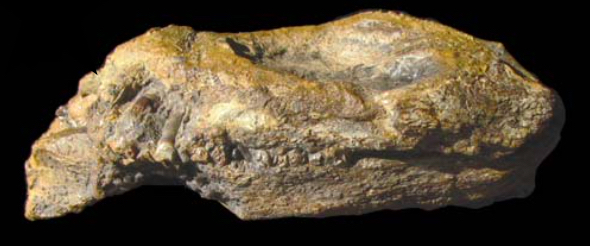Lusonectes

L. sauvagei
Lusonectes is a poorly known microcleidid the Toarcian (Lower Jurassic) of Portugal. It is known from a single holotype specimen (MG33), a partial skull in the Museu Geológico, Lisbon, Portugal. It was described and named by Smith et al. (2012) as the first diagnostic plesiosaur species from Portugal, and the westernmost occurrence of a plesiosaur in Europe.
The genus name stems from the Latin Luso, meaning Portuguese, and the Greek nectes, meaning swimmer. The species name honours the 19th century palaeontologist Henri Émile Sauvage (1842–1917) who made significant contributions towards vertebrate palaeontology in Portugal, and first described MG33.
Smith et al. (2012) provide the following diagnisis for the taxon: “Lusonectes possesses a single autapomorphy, a broad triangular parasphenoid cultriform process that is as long as the posterior interpterygoid vacuities. The taxon is further diagnosed by the following unique combination of characters: jugal contacts the orbital margin, a distinct para− sphenoid–basisphenoid suture exposed between the poste− rior interpterygoid vacuities, an unkeeled ventral parabasi− sphenoid with a flat anterior and gently convex posterior re− gion of the ventral surface, lack of an anterior interpterygoid vacuity, and palatal striations on the ventral surface of the pterygoids. The teeth have no ornamentation or striations, but this may be due to abrasion.” (p.258)

